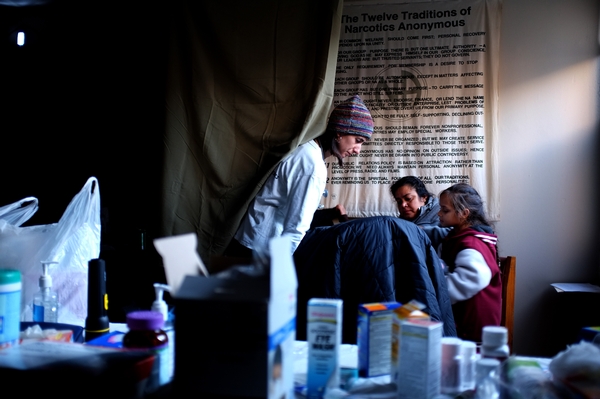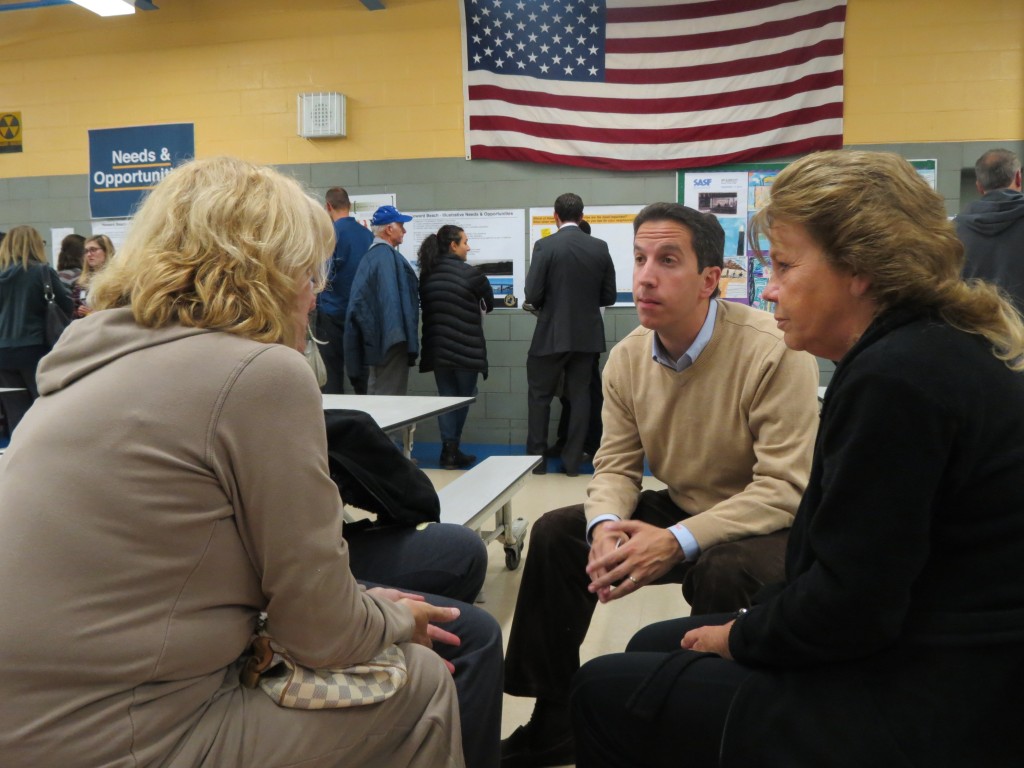
A Doctors Without Borders physician examines patients in a makeshift medical clinic in a building at the Ocean Village housing complex in Arverne, Rockaway days after Sandy hit. Photos Courtesy Doctors Without Borders/Michael Goldfarb
For hospitals throughout the city, Hurricane Sandy brought daunting challenges – there were significantly overcrowded conditions at St. John’s Episcopal in the Rockaways, the peninsula’s only hospital that already faced long wait times following the closure of Peninsula Hospital last year; parts of Manhattan’s Bellevue Hospital Center rapidly filled with water and the country’s oldest public hospital lost generator power; and nurses at NYU Langone Medical Center heroically evacuated the facility’s tiniest patients by carrying babies down long flights of stairs.
In Queens, the storm raised the question of what it means for a community in dire circumstances akin to Sandy to have just one hospital.
Elected officials, including Assemblyman Phil Goldfeder (D-Rockaway Park), civic leaders and hospital staff have, over the past year, voiced a wide range of concerns about St. John’s being the sole hospital on the peninsula, often citing worries that should St. John’s, which is facing financial woes, close, Rockaway residents could be trapped with no hospital should a storm like Sandy happen again. During Sandy, bridges to the Rockaways were inaccessible – what, residents asked, would have happened if St. John’s was not available to them?

Assemblyman Goldfeder speaks with a number of Howard Beach residents at a recent meeting of the Howard Beach chapter of New York Rising about a variety of concerns they have following Sandy. In addition to insurance costs, residents said they worried about access to health care during disasters.
Goldfeder recently called on Gov. Cuomo to allocate a portion of Sandy relief funds for St. John’s.
“In the aftermath of Superstorm Sandy, St. John’s Hospital’s services were crucial for our community, and they continue to be an essential resource for our families,” Goldfeder said in a prepared statement.
Kevin Finnegan, political director for 1199SEIU, too advocated for additional funding to be designated for St. John’s.
“These resources can help support a vital healthcare institution in a community still reeling from the storm,” Finnegan said in a prepared statement.
Almost immediately after the worst of Sandy passed, St. John’s issued a statement saying it was operating at “full capacity, meeting patient needs under challenging conditions.”
“Staff continues to work, despite personal losses of homes, cars, electricity, transportation, and fuel, demonstrating incredible commitment and dedication,” the hospital said on its website.
In an attempt to fill the vacuum of health care services, the nonprofit group Doctors Without Borders began working in Rockaway alongside area community groups. A team of two doctors, a nurse-practitioner, a mental health specialist, a nurse, and logistical staff established a temporary clinic in a community room in an Arverne housing complex immediately after the storm and treated patients with such conditions as hypertension, asthma and congestive heart failure.
Other South Queens residents have voiced concerns about not only St. John’s – but about limited access to health care facilities in general during Sandy.
“If people need to get to the hospital because their power has gone out and they rely on that for medical treatment, what happens?” asked Howard Beach resident Valerie Messana at a recent meeting of the Howard Beach chapter of New York Rising. “You couldn’t drive anywhere during Sandy; there was no power – these are questions people need to answer.”
By Anna Gustafson
